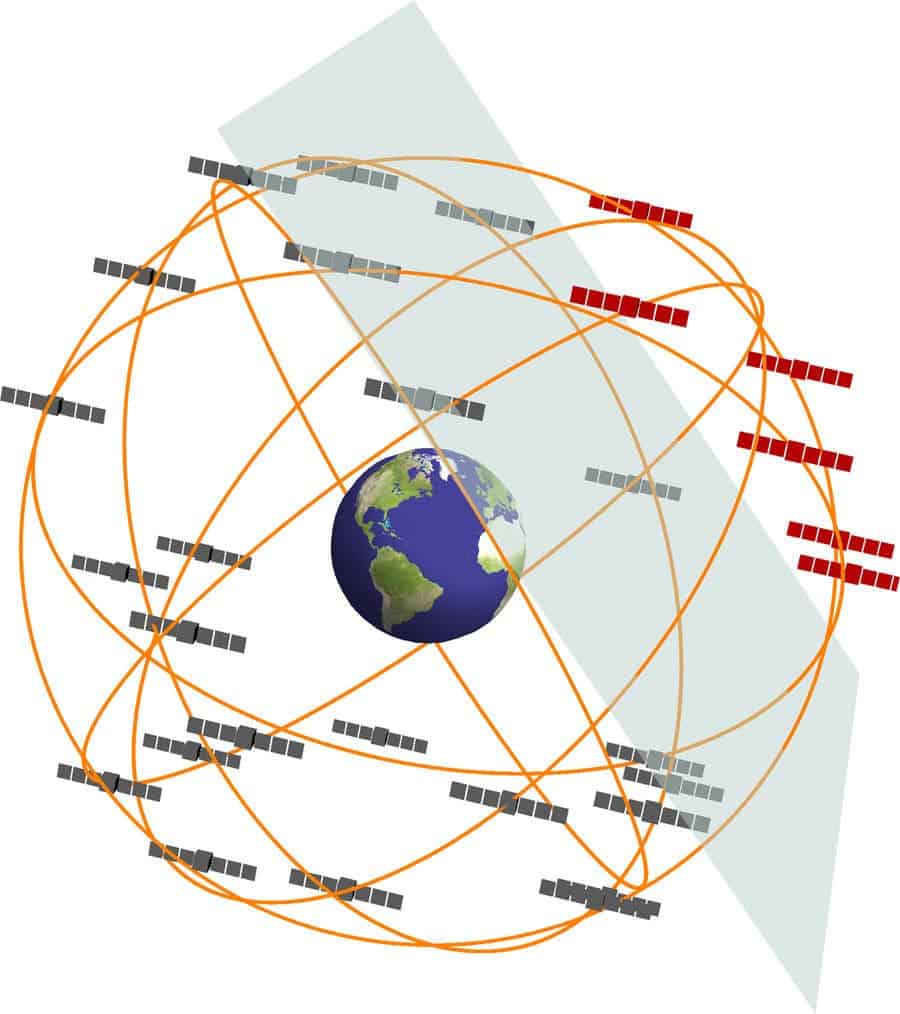A pair of researchers from the University of Nevada, Reno, in an attempt to detect and better define dark matter, have pulled off a pretty amazing science experiment. The team used 16 years worth of GPS data to turn the whole planet into a massive detector that might detect clumps of dark matter that could extend beyond the solar system.

Dark matter makes up roughly 85% of all matter in the universe, which is a real bummer for us humans — as we simply have no idea what it is, what it looks like, nothing. Astrophysics has provided multiple evidence that it actually exists, but so far, it’s always been beyond our grasp. As generally tends to happen when faced with great unknowns, we do however have quite a lot of hypotheses pertaining to its nature.
Great Dark Walls
The one that Andrei Derevianko and Geoff Blewitt — professors of quantum physics and geophysics respectively at the University of Nevada’s College of Science — wanted to check is whether dark matter arises from ultralight quantum fields, forming macroscopic objects called domain walls.
So they set about trying to prove or disprove their theory. The research focused on ultralight quantum fields. Their interaction with normal matter would slightly change the effective values of fundamental constants of nature, such as the mass of electrons, the mass or quarks, or the workings of electric charges. Such differences would compound into observable shifts in atomic energy levels that could, their hypothesis goes, be measurable by monitoring atomic frequencies. The only issue was how could they get their hands on a suitable detector.
Luckily, a couple of them were flying just shy of the atmosphere’s edge — GPS satellites.
“Geoff has been using the atomic clocks on the GPS satellites in his geodetic work — measuring uplift of tectonic plates, the shape of the earth, earthquakes, global sea levels, so is familiar with the precision of the system,” Derevianko said. “I’ve worked on devising more accurate atomic clocks. We realized the GPS system could be used to listen to the dark matter sweeping through us.”
“Instead of spending billions of dollars to eliminate some plausible dark mater models, we repurposed these common tools (GPS atomic clocks) we use every day to do basic, fundamental science to look for the answers to this great mystery — to devise our own planet-sized dark matter detector.”
Zipping through
It may not feel like it to you, but the Earth is speeding through the Milky Way at about 300 kilometers per second. This means that it’s merrily passing through quite a lot of space, the GPS satellites piggybacking on it. The dark matter bodies the team wanted to check can be shaped like walls or bubbles that span huge distances — so much so that they estimate a dark matter clump would take 3 minutes to cross the GPS constellation.

Global positioning system navigation relies on precision timing signals furnished by atomic clocks. The devices are sensitive enough that if the physicists’ hypothesis on the nature of dark matter proves true, they would be influenced by the passage of these bodies of dark matter. When a clump overlaps with the GPS constellation, it would slightly shift on the mass of particles and on the forces acting on them. The pull would be really weak, but ultra-sensitive devices like atomic clocks should be able to pick up on it.
“It’s like a wall moving through a network of clocks causing a wave of atomic clock glitches propagating through the GPS system at galactic speeds,” as Derevianko puts it in more awesome terms,
So, the two gathered data from the 32 satellites that make up the 31,000-mile-wide GPS constellation and ground-based GPS stations, retrieving figures recorded every 30 seconds for the last 16 years. Data was retrieved from sources around the world, and in particular from NASA’s Jet Propulsion Laboratory. They then used a model to sift through this data, looking for irregularities in atomic clock signals.
Aaaaaaand they didn’t find anything. It’s a bit disappointing, sure, but it’s not really surprising given how elusive dark matter has proven itself to be up to now. It has to be said, however, that while the team didn’t find any definitive proof to support their theory, it could be that the effect is simply more subtle than anything we can pick up, or that the Earth crosses lumps of dark matter very rarely.
“We are another step closer to discovering how to detect dark matter, and ultimately to define more accurately what it is, what kind of particle it is” Derevianko said. “Mining these archival data, we found no evidence for domain walls of ultralight dark matter at our current sensitivity level.”
“However, this search rules out a vast region of possibilities for this type of dark matter models.”
Still, now we know a tiny little bit more about dark matter — namely, we know one extra thing it is not. And we found out through an awesomely creative and cool experiment performed on a massive scope. I’d say that’s score 1 for science.
The paper “Search for domain wall dark matter with atomic clocks on board global positioning system satellites” has been published in the journal Nature Communications.


